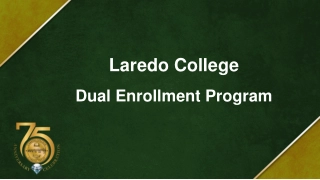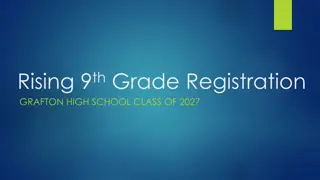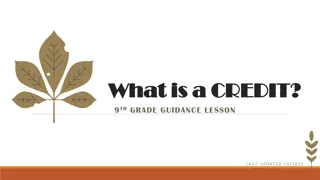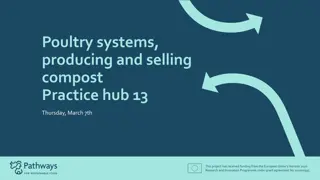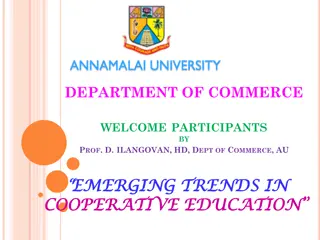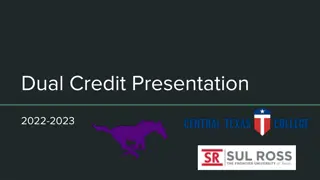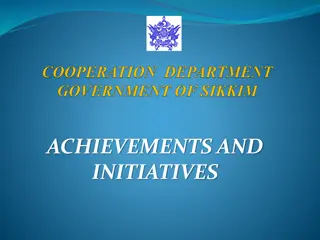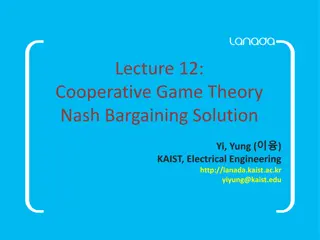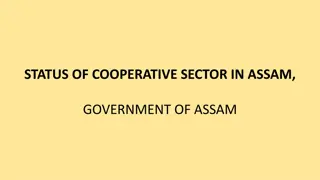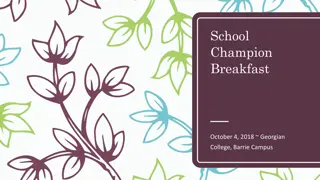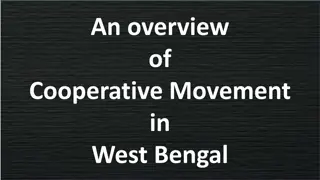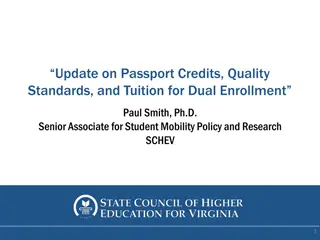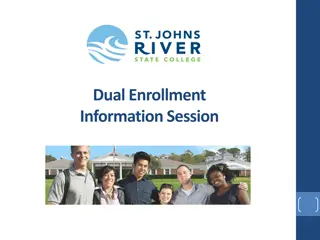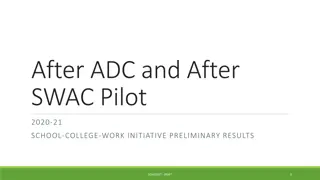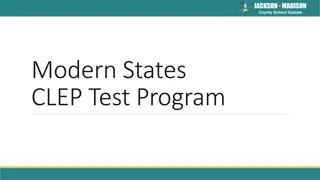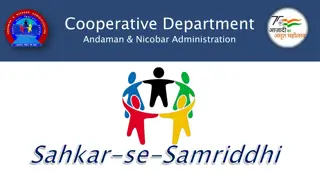Exploring Dual Credits and Cooperative Education Programs
Dual credit programs offer high school students the opportunity to earn college credits while completing their secondary education, potentially leading to a post-secondary diploma or Certificate of Apprenticeship. These programs aim to support students facing challenges in meeting graduation requirements and assist them in transitioning successfully to college or apprenticeship programs. Recruitment is typically facilitated through school boards, with guidance counselors playing a key role in student selection. Cooperative education programs are also integrated, allowing students to combine dual credits with work placements.
Download Presentation

Please find below an Image/Link to download the presentation.
The content on the website is provided AS IS for your information and personal use only. It may not be sold, licensed, or shared on other websites without obtaining consent from the author. Download presentation by click this link. If you encounter any issues during the download, it is possible that the publisher has removed the file from their server.
E N D
Presentation Transcript
Dual credit programs allow students, while they are still in secondary school, to take college or apprenticeship courses that count towards both their OSSD and a post-secondary diploma or Certificate of Apprenticeship. They are college-level courses that assist students with making a successful transition to college and/or apprenticeship programs in addition to helping them complete their OSSD. Primary target audience is students who face significant challenges in completing the requirements for graduation but who have the potential to succeed. OYAP and/or SHSM students are also eligible to participate in dual credits. Dual credits are either college-delivered (students attend class on a college campus) or team-taught (course is delivered in a high school and content is delivered by both a college instructor and a secondary school teacher) WHAT IS A DUAL CREDIT?
Recruitment of students takes place through the school boards. Students must go through their school s guidance department to apply for dual credit or they may be referred by a secondary school teacher. Guidance counsellors and student success teachers submit applications for senior students who meet the criteria of being disengaged, underachieving, at risk of not graduating or facing personal barriers, or who are in OYAP or an SHSM program. A central school board representative then vets the applications to ensure that seats are given to students who are in the primary target audience. HOW DO STUDENTS ACCESS DUAL CREDITS?
Cooperative education programs are mentioned in the dual credit policy document. A college-delivered dual credit course cannot be the related course in a cooperative education program; The scheduling conflicts that may arise if a student is taking a college-delivered dual credit may be alleviated if the student is also taking one or more credits through cooperative education. With the approval of the co-op teacher and the workplace supervisor, students can arrange to complete the in-school class and work placement hours for the co-op at alternative times; Dual credit classroom time cannot be applied towards work placement hours. DUAL CREDIT POLICY
Level 1 General Machinist (Barrie, SMCDSB/SCDSB) 8 week block delivery May June Students start the semester in co-op Level 1 Carpentry (Bracebridge, SMCDSB/TLDSB/SCDSB) 8 week block delivery May June Students start t he semester in co-op Level 1 Cook (Owen Sound, BGCDSB, BWDSB) 5 month delivery Combination of college class time and co-op placement Level 1 Hairstylist (Barrie, SMCDSB/SCDSB/TLDSB) Once per week for 10 months Students may be in co-op and/or taking regular classes at high school LEVEL 1 APPRENTICESHIP OPPORTUNITIES
LEVEL 1 GENERAL MACHINIST I did a 4 credit co-op in semester 2 and then did my level 1 at Georgian College in the spring. The math was definitely an eye- opener but it prepared me to go back to my employer for the summer with new skills. I had a lot more to bring to the table for my boss. Tyler, Level 1 Machinist
LEVEL 1 HAIRSTYLING I attended my Level 1 hairstyling course once a week for a full school year in my last year of high school. It was intense. But now I m set to do my Level 2 and I should be working as a fully licensed stylist by the time I m 19 years old. One day I hope to have my own salon. Taylor, Level 1 Hairstyling




